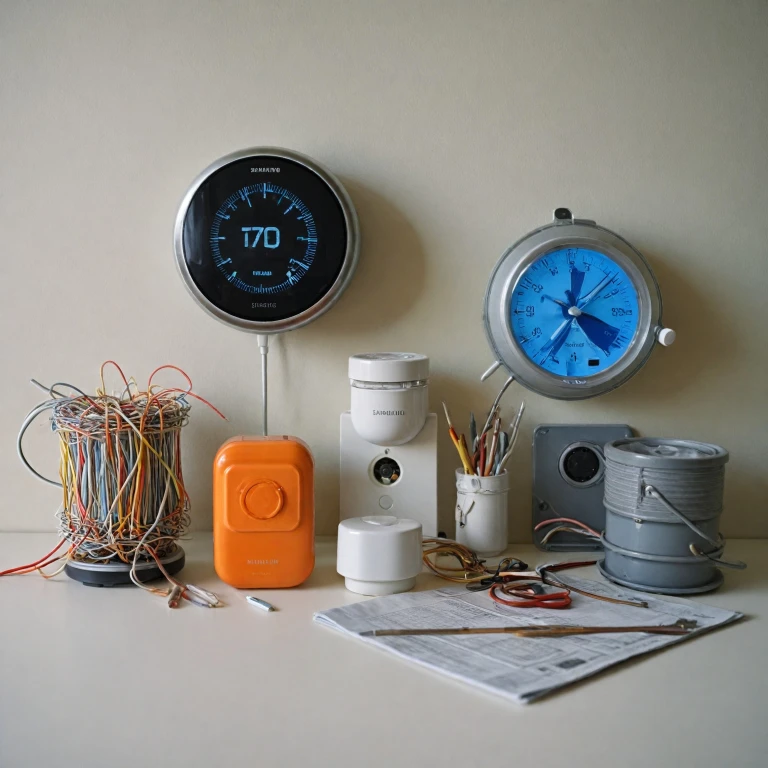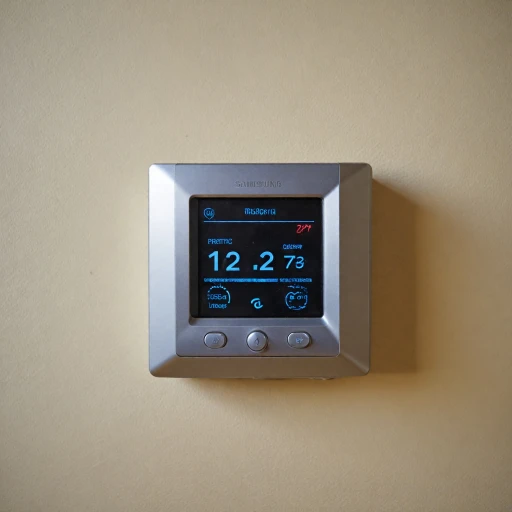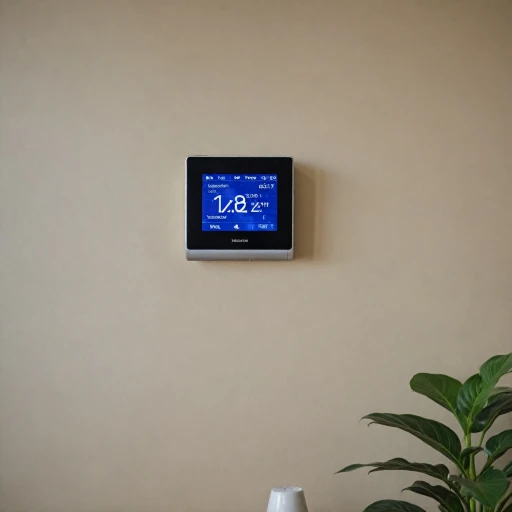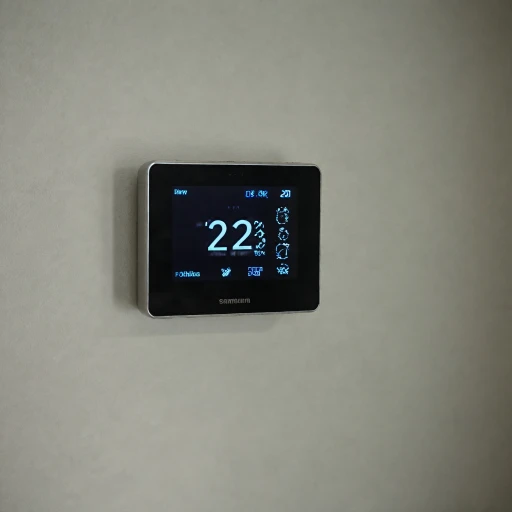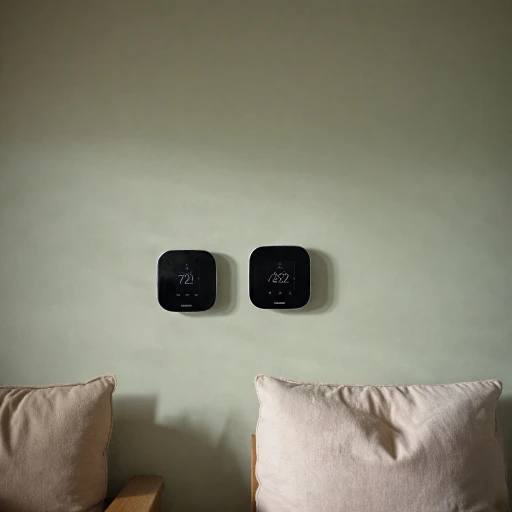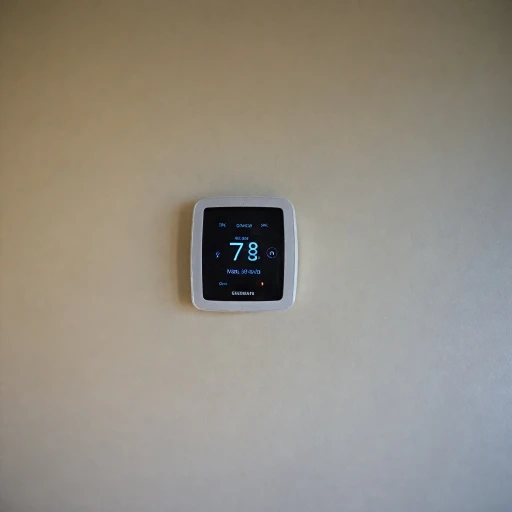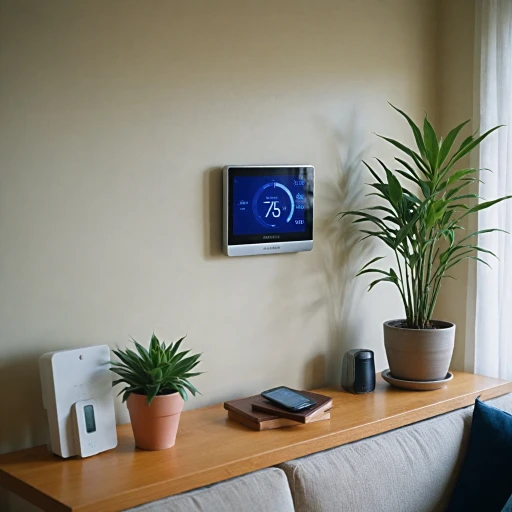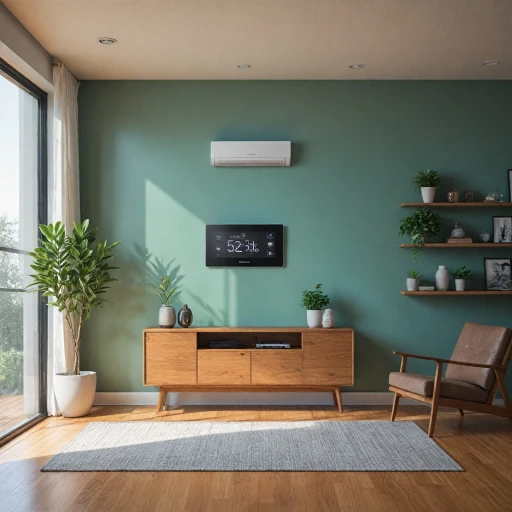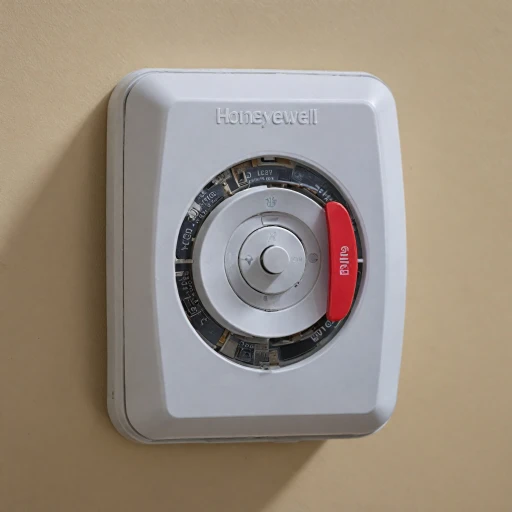
How Temperature Sensors Enhance Smart Thermostat Efficiency
Boosting Smart Thermostat Performance with Temperature Sensors
Nest thermostats have redefined home climate control with their advanced technology, and a key component that amplifies their efficiency is the temperature sensor. Adding sensors to your Nest thermostat system helps create a more tailored and precise temperature regulation for each room, accommodating various environmental needs and optimizing comfort. Smart thermostats, such as the Nest learning models, use both built-in and external temperature sensors to gather data from different areas of your home. This data collection allows the thermostat to adjust the heating or cooling system dynamically. By utilizing multiple sensors, the thermostat can accurately report temperature variances throughout your living space, enabling optimal climate control. The integration of temperature sensors enables Nest thermostats to correctly identify hot and cold spots within the house. For instance, a temperature sensor in the living room can continuously measure the ambient temperature and communicate necessary adjustments to the Nest thermostat. As a result, your smart home system can efficiently manage temperature set points, ultimately conserving energy and enhancing comfort. Moreover, the versatility offered by Nest temperature sensors allows you to control various rooms through the Nest app conveniently. Google’s adaptive learning technology continuously updates your home’s environment settings, ensuring comfort while minimizing energy usage. This adaptability is a noteworthy highlight of the Nest thermostats, supported by their smart sensor capabilities. Understanding the nuances of temperature sensor integration within your smart home can make a significant difference. For additional insights into how sensors influence smart thermostats, explore more about how temperature sensors enhance smart thermostats.Installation and Placement of Temperature Sensors
Optimizing Placement and Installation Techniques
Understanding the intricacies of temperature sensor placement is crucial for maximizing the efficiency of your Nest thermostat. Proper installation doesn't just influence overall system performance but also ensures that different rooms maintain their desired temperatures more consistently. First and foremost, deciding where to place your temperature sensor can make a significant difference. For instance, rooms that tend to run slightly cooler or warmer than others, such as the living room next to large windows, often benefit from having dedicated sensors. Installing a sensor in such locations helps your Nest thermostat make smarter adjustments. Moreover, ease of installation is a key advantage that comes with these devices. Most temperature sensors, including those by Google, provide user-friendly procedures that don't necessitate specialized DIY expertise. However, certain elements should be considered to avert common pitfalls faced by users in the United States.- Height: Mount the sensor at about chest-level—neither too high nor too low—as varying heights can lead to inaccurate readings.
- Distance: Ensure the sensor is within the Nest thermostat's communication range to maintain seamless integration and control through the Nest app.
- Avoidance Zones: Locations like vents, radiators, and direct sunlight can skew temperature readings. Keeping these away from such interference helps in attaining a true representation of the room temperature.
Comparing Built-in vs. External Temperature Sensors
Evaluating Built-in and External Temperature Sensors
When it comes to smart thermostats, understanding the differences between built-in and external temperature sensors is crucial in optimizing the system's efficiency. Both options have their unique benefits, but they serve different purposes depending on your home environment and needs.
Built-in temperature sensors in products like the Nest Thermostat provide accurate readings of the immediate surroundings, making them extremely effective for room temperature control. However, their limitation lies in their stationary position. If your thermostat is located in an area that experiences variable temperatures, such as close to a window or in direct sunlight, it may not reflect the true temperature of the entire room.
This is where external temperature sensors come into play. External sensors, like those offered by Google Nest, can be strategically placed in different areas of your home, providing a more comprehensive understanding of your home’s thermal landscape. For instance, placing a sensor in the living room or bedroom can ensure those spaces reach the desired comfort levels without relying solely on the thermostat's built-in sensor.
One of the advantages of external sensors is their ability to report temperature data back to your smart thermostat system, allowing for more precise adjustments. This feature often makes your Nest Learning Thermostat more efficient in saving energy and optimizing home comfort. Moreover, the flexibility to relocate these wireless sensors, powered by long-life batteries, adds an extra layer of convenience, supporting the smart thermostat's learning capabilities.
Comparing these two types of sensors can help you decide on the best solution for your home's needs. If you're experiencing difficulty with built-in sensors, such as inaccurate temperature readings, it might be time to consider resetting your thermostat or experimenting with external options. Whichever you choose, integrating these advanced features today helps enhance overall comfort and control in your smart home environment.
Integrating Temperature Sensors with Smart Home Systems
Optimizing Smart Home Integration
Integrating temperature sensors with your smart home system enhances both comfort and efficiency, tailoring the environment of each room to your preferences. The Nest thermostats provide a robust platform for this integration. The Nest app allows you to connect your temperature sensors seamlessly with your smart thermostat. This integration enables you to control the climate of specific rooms, such as the living room, based on real-time data. With these capabilities, you can set your Nest thermostat to prioritize the temperature of one room over others, or balance the temperature across different parts of your home. The convenience of controlling your home’s temperature with just a few taps on your smartphone adds an extra layer of comfort and ease. Another important aspect to consider is the interoperability of Google's products within your smart home ecosystem. Google Nest sensors work in harmony with other Google devices like smart speakers and virtual assistants, creating a cohesive network that enhances your home's intelligence. Additionally, the learning thermostat feature in Nest products adapts to your routine, efficiently managing the temperature settings without constant manual adjustments. Battery management is also crucial in maintaining the performance of these sensors. The latest gen Nest thermostats offer extended battery life for both the thermostat and its connected temperature sensors. This sustainable approach ensures that your system remains operational without frequent interruptions or the need for replacements. As the smart home technology landscape evolves, more advanced features will be integrated into these systems. Staying informed about these developments will empower you to utilize your smart thermostat system to its fullest potential. Integrating temperature sensors with smart home systems is not just about responding to current needs but also preparing for future innovations that will keep redefining home comfort and efficiency.Troubleshooting Common Issues with Temperature Sensors
Troubleshooting Temperature Sensors: Common Challenges and Solutions
Dealing with temperature sensors in your Nest or Google Nest thermostat system can occasionally present some challenges. Here’s a guide to help you troubleshoot common issues: Battery Problems It's not uncommon for a sensor's battery to run low, especially if it's been in use for a while. A low battery may result in the sensor failing to report the room temperature accurately or even disconnecting from the system. Always ensure that the battery is fresh and properly inserted. Checking battery levels regularly through the Nest app can help avoid disruption. Connectivity Issues A temperature sensor may fail to connect to the thermostat or lose connection intermittently. This can happen when the sensor is located far from the thermostat or is blocked by obstructions such as walls or furniture. Relocating the sensor to a more central position in the room or removing obstructions can improve connectivity. Placement Problems Improper placement affects how temperature readings are captured and reported. Ensure that sensors are placed in areas that accurately represent the living room's temperature, avoiding direct sunlight, drafts, or near heat sources like vents or radiators. For optimal performance, consider the installation guidelines from relevant sections. Calibration Discrepancies Sometimes, temperature sensors may provide readings that differ from what you expect. Calibration discrepancies between built-in and external sensors can occur. Double-check the settings in the Nest app to make sure temperatures are set and controlled correctly. Interference from Other Devices Smart home systems like the Nest Learning Thermostat rely on wireless communication. Interference from other wireless devices can affect sensor performance. Ensure there is minimal interference from other electronics by placing the sensors strategically away from devices that also use wireless technology. By regularly monitoring, maintaining, and adjusting the placement of your temperature sensors, these issues can often be resolved, ensuring that your nest thermostats operate efficiently across the United States. Should persistent problems arise, consulting with professional support or referencing comprehensive product reports may provide additional help.Future Trends in Smart Thermostat Technology
Innovations in Smart Thermostat Technology
The smart thermostat market is rapidly evolving, driven by advancements in technology and increasing demand for energy-efficient solutions. As you might have seen from the previous insights on temperature sensors and their integration into smart systems, the industry is constantly looking for ways to enhance consumer experience and efficiency. Let’s delve into what the future holds for smart thermostats, particularly those powered by Google like the Nest series.
In the coming years, we can anticipate several key trends that will shape the landscape of smart thermostats:
- Enhanced Sensor Technology: Future temperature sensors are likely to become more sophisticated, offering greater precision in detecting a room's temperature changes. Whether built-in or external, these sensors will work seamlessly with the thermostat to optimize climate control in every room.
- Integration with IoT Devices: Smart home systems are becoming increasingly connected, and the integration of nest thermostats with other IoT devices will provide more robust automation options. Imagine a scenario where your thermostat adjusts based on data from a smart door lock, further personalizing climate control based on whether a room is occupied.
- AI and Machine Learning Enhancements: Learning thermostats, like the Nest Learning model, are set to become even smarter with advancements in AI. These systems will understand habits more deeply and will be able to predictively adjust settings, thus optimizing the efficiency of heating and cooling systems.
- Power and Battery Improvements: Battery life has always been a challenge for wireless sensors. Expect newer models to feature enhanced battery technology, reducing the need for frequent replacements and ensuring reliable sensor performance.
- Broader Ecosystem Integration: Larger tech companies, such as Google and Amazon, will continue to expand their ecosystems, enhancing compatibility and functionality across their range of devices. This broad integration will help streamline the user experience, allowing for easier control via apps like the Google or Nest app.
- Enhanced User Interfaces: The user interface of a thermostat app will become more intuitive, offering detailed energy usage reports and easier set-ups, thereby empowering users to make informed decisions about their energy consumption.
As manufacturers continue to innovate, these trends will undoubtedly impact how we interact with our home environments, making our lives not only more comfortable but also more environmentally conscious. The United States, being a leading market, will likely see these changes sooner, setting a benchmark for other regions to follow.
